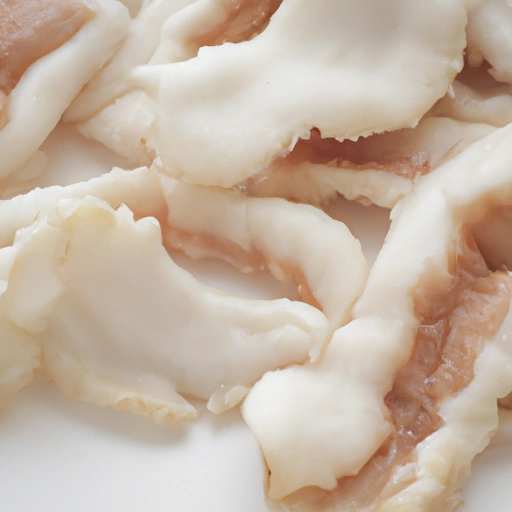Tripe
Description

Tripe is the edible lining from the stomachs of various farm animals, most commonly cows. This versatile ingredient is used in a myriad of traditional dishes around the globe and is renowned for its unique texture and ability to absorb flavors. Tripe is often sold cleaned and partially cooked, ready to be used in various recipes. It is a staple in many cuisines and can be prepared using different methods, such as stewing, boiling, and grilling.
Common uses
Tripe is most commonly used in soups, stews, and sauteed dishes. In some cultures, it is also served pickled, fried, or as a cold cut. Due to its slightly chewy texture, it is often cooked for extended periods to become tender.
Nutritional value
Calories
Tripe is a low-calorie food, typically containing about 80-100 calories per 3.5 oz (100 g) serving.
Protein
Tripe is a good source of protein, offering about 15 grams per 3.5 oz (100 g) serving.
Fat
The fat content in tripe can vary, but it generally contains about 3.5 grams of fat per 3.5 oz (100 g) serving.
Carbohydrates
Tripe contains a minimal amount of carbohydrates, less than 2 grams per 3.5 oz (100 g) serving.
Vitamins
Tripe is a source of B vitamins, particularly vitamin B12, which is vital for brain health and maintaining healthy blood cells.
Minerals
It is rich in minerals like zinc, selenium, and phosphorus, which are essential for overall health.
Health benefits
As a protein-rich, low-carbohydrate food, tripe can be a beneficial part of a balanced diet. Its mineral content supports a healthy immune system and bone health, while vitamin B12 plays a crucial role in neurological function.
Potential risks
Tripe should be consumed in moderation due to its cholesterol content. Individuals with gout or high cholesterol should consult with a healthcare provider before incorporating tripe into their diets. Additionally, as with all offal, it is crucial to ensure that tripe is sourced from reputable suppliers and prepared hygienically to minimize health risks.
Common recipes
Tripe is featured in a variety of dishes around the world, such as the Italian 'trippa alla romana,' the French 'tripoux,' and the spicy Mexican soup 'menudo.'
Cooking methods
Common cooking methods for tripe include slow simmering in soups and stews, braising, and grilling. It requires thorough cooking to achieve a tender texture.
Pairing with other ingredients
Tripe pairs well with bold spices and herbs, tomatoes, onions, garlic, and vinegar. It also complements the flavors of legumes like white beans and chickpeas.
Summary
Tripe is a traditional food ingredient with a rich history and presence in many cultures' cuisines. Nutrient-dense and versatile, it is enjoyed for its distinctive texture and ability to complement a wide range of seasonings and other ingredients. While offering various health benefits, it should be consumed mindfully considering the potential risks associated with cholesterol content.